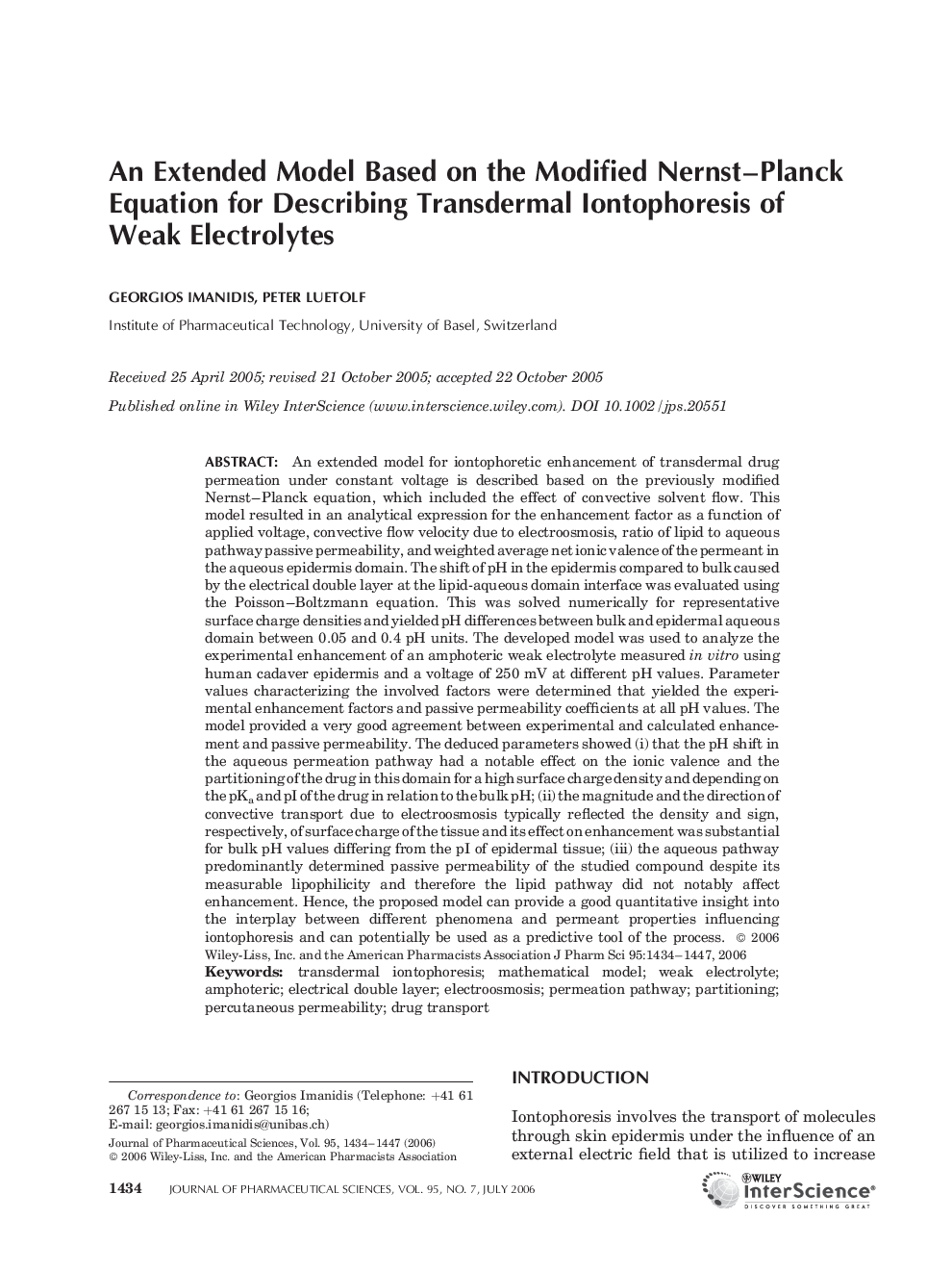| Article ID | Journal | Published Year | Pages | File Type |
|---|---|---|---|---|
| 2487930 | Journal of Pharmaceutical Sciences | 2006 | 14 Pages |
Abstract
An extended model for iontophoretic enhancement of transdermal drug permeation under constant voltage is described based on the previously modified Nernst-Planck equation, which included the effect of convective solvent flow. This model resulted in an analytical expression for the enhancement factor as a function of applied voltage, convective flow velocity due to electroosmosis, ratio of lipid to aqueous pathway passive permeability, and weighted average net ionic valence of the permeant in the aqueous epidermis domain. The shift of pH in the epidermis compared to bulk caused by the electrical double layer at the lipid-aqueous domain interface was evaluated using the Poisson-Boltzmann equation. This was solved numerically for representative surface charge densities and yielded pH differences between bulk and epidermal aqueous domain between 0.05 and 0.4Â pH units. The developed model was used to analyze the experimental enhancement of an amphoteric weak electrolyte measured in vitro using human cadaver epidermis and a voltage of 250Â mV at different pH values. Parameter values characterizing the involved factors were determined that yielded the experimental enhancement factors and passive permeability coefficients at all pH values. The model provided a very good agreement between experimental and calculated enhancement and passive permeability. The deduced parameters showed (i) that the pH shift in the aqueous permeation pathway had a notable effect on the ionic valence and the partitioning of the drug in this domain for a high surface charge density and depending on the pKa and pI of the drug in relation to the bulk pH; (ii) the magnitude and the direction of convective transport due to electroosmosis typically reflected the density and sign, respectively, of surface charge of the tissue and its effect on enhancement was substantial for bulk pH values differing from the pI of epidermal tissue; (iii) the aqueous pathway predominantly determined passive permeability of the studied compound despite its measurable lipophilicity and therefore the lipid pathway did not notably affect enhancement. Hence, the proposed model can provide a good quantitative insight into the interplay between different phenomena and permeant properties influencing iontophoresis and can potentially be used as a predictive tool of the process. © 2006 Wiley-Liss, Inc. and the American Pharmacists Association.
Keywords
Related Topics
Health Sciences
Pharmacology, Toxicology and Pharmaceutical Science
Drug Discovery
Authors
Georgios Imanidis, Peter Luetolf,
